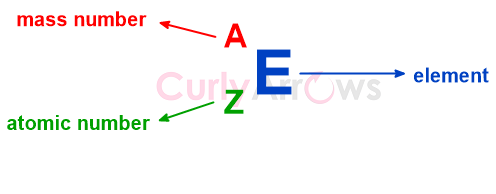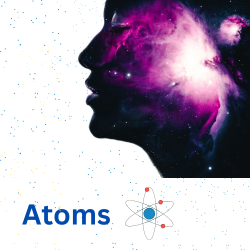Question: Nitrogen (Atomic Number 7) has stable isotopes (half-life greater than 1 sec) of mass numbers 13, 14, 15, 16 and 17. Calculate number of protons and neutrons in each of the isotopes of nitrogen.
Solution:
The Atomic Number (Z) of Nitrogen is 7. The atomic number is always equal to the number of protons. And the number of protons always equals the electron number in an uncharged atom so that the atom is electrically neutral.
Therefore, an uncharged Nitrogen atom always has 7 protons and 7 electrons.
An isotope is formed when the neutron number varies in an atom of the same element. This changes the mass number in an atom’s nucleus since the mass number A is the sum of protons and neutrons. The proton number remains unchanged.
mass number A= Number of protons (p) + number of neutrons (n)
The mass number is written as a superscript next to the element’s symbol as,

So, the number of neutrons in different Nitrogen isotopes 13N, 14N, 15N, 16N, and 17N is-
13N Isotope:
Mass number =13 (Given)
mass number (A) = number of protons (p) + number of neutrons (n)
A= p+ n
Therefore, n= A-p = 13-7 = 6.
Solution using log table-
n= A-p
Applying log10 on both sides
log10 n= log (A-Z)
log10 n= log10 (13-7) =log10 6=0.7782
Applying antilog,
n =Antilog (0.7782)
6.001 = 6
The number of neutrons in the 13N Isotope is 6, and the number of protons is 7.
14N Isotope
Mass number =14 (Given)
mass number (A) = number of protons (p) + number of neutrons (n)
A= p+ n
Therefore, n= A-p = 14-7 = 7.
Solution using log table-
n= A-p
Applying log10 on both sides
log10 n= log (A-Z)
log10 n= log10 (14-7) = log10 7 =0.8451
Applying antilog,
n =Antilog (0.8451) = 7
The number of neutrons in the 14N Isotope is 7, and the number of protons is 7.
15N Isotope
Mass number =15 (Given)
mass number (A) = number of protons (p) + number of neutrons (n)
A= p+ n
Therefore, n= A-p = 15 - 7 = 8.
Solution using log table-
n= A-p
Applying log10 on both sides
log10 n= log (A-Z)
log10 n= log10 (14-7) = log10 8 =0.9031
Applying antilog,
n =Antilog (0.9031) = 8
The number of neutrons in the 15N Isotope is 8, and the number of protons is 7.
16N Isotope
Mass number =16 (Given)
mass number (A) = number of protons (p) + number of neutrons (n)
A= p+ n
Therefore, n= A-p = 16 - 7 = 9.
Solution using log table-
n= A-p
Applying log10 on both sides
log10 n= log (A-Z)
log10 n= log10 (16-7) = log10 9 =0.9542
Applying antilog,
n =Antilog (0.9542) = 9
The number of neutrons in the 16N Isotope is 9, and the number of protons is 7.
17N Isotope
Mass number =17 (Given)
mass number (A) = number of protons (p) + number of neutrons (n)
A= p+ n
Therefore, n= A-p = 17 - 7 = 10.
Solution using log table-
n= A-p
Applying log10 on both sides
log10 n= log (A-Z)
log10 n= log10 (17-7) = log10 10 =1.000
Applying antilog,
n =Antilog (1.000) = 10
The number of neutrons in the 17N Isotope is 10, and the number of protons is 7.
